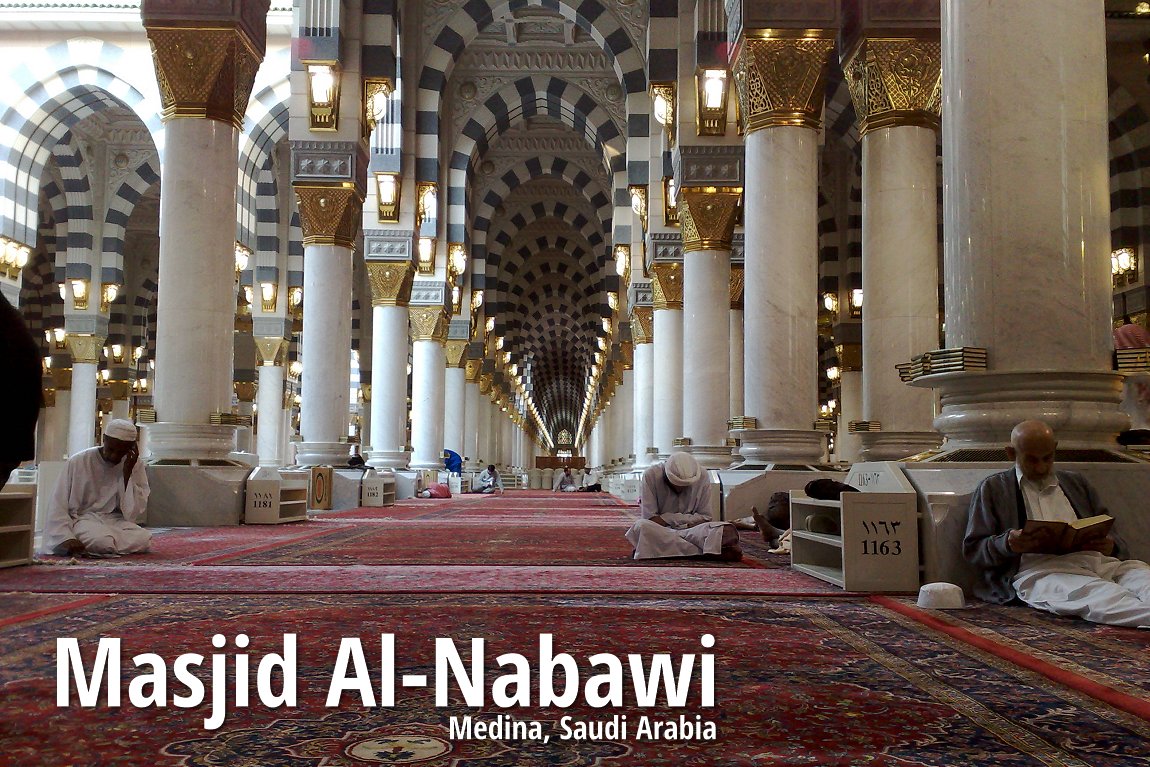 Masjid Al-Nabawi, Medina
Masjid Al-Nabawi, MedinaSource: https://commons.wikimedia.org/wiki/File:INSIDE_MASJID_NABAVI_12122008224.jpg
Author: Bluemangoa2z

Author: Bluemangoa2z

Masjid al-Nabawi is the biggest mosque in the city of Medina, Saudi Arabia. It is the final resting place of the Prophet Muhammad, and is hence the second holiest site in Islam. The most notable feature of Masjid al-Nabawi is its central green dome which enshrines the tomb of the Prophet Muhammad.
Masjid al-Nabawi was built on the site which was originally occupied by Muhammad's house. He settled here following his Hijra to Medina from Mecca in AD 622. He was personally involved in the construction on a mosque on the grounds next to his house.
The original mosque was an open-air structure with a raised platform for the reading of the Quran. It was a rectangular enclosure measuring 30 m (98 ft) by 35 m (115 ft) with three doors - one to the south, one to the west and one to the east. This building plan was since been adopted for mosque designs all around the world.
Originally the prayer direction, or qibla, was to the north, towards Jerusalem. It was later re-oriented south to face the Kaaba in Mecca.
Since the lifetime of Muhammad, Masjid al-Nabawi has been enlarged several times. In AD 707, a much larger structure was built by the Umayyad Caliph Al-Walid ibn Abd al-Malik, incorporating Muhammad's tomb. It measured 84 m (276 ft) by 100 m (330 ft). It has decorative mosaics laid by Coptic and Greek craftsmen employed by the Caliph, who was also instrumental in the construction of the Umayyad Mosque in Damascus and the Al-Aqsa Mosque in Jerusalem. His father the Umayyad Caliph Abd al-Malik built the Dome of the Rock.
The present Masjid al-Nabawi is a hundred times bigger than the original mosque built by Muhammad. It can accommodate 500,000 worshippers at any one time. The mosque has a flat roof topped by 24 domes. Holes at the base of the dome allow light in to illuminate the inside. There are three evenly spaced portico on the northern side of the mosque and two on the southern side.
The new section of Masjid al-Nabawi completely encases the older section. The old section has numerous small pillars while the new section has white marble and is completely air-conditioned. A replica of Masjid al-Nabawi can be found at Taman Tamadun Islam, an Islamic-themed monument park in Kuala Terengganu, Malaysia.
 Latest updates on Penang Travel Tips
Latest updates on Penang Travel Tips
 Map of Roads in Penang
Map of Roads in Penang
Looking for information on Penang? Use this Map of Roads in Penang to zoom in on information about Penang, brought to you road by road.
Copyright © 2003-2025 Timothy Tye. All Rights Reserved.

 Go Back
Go Back